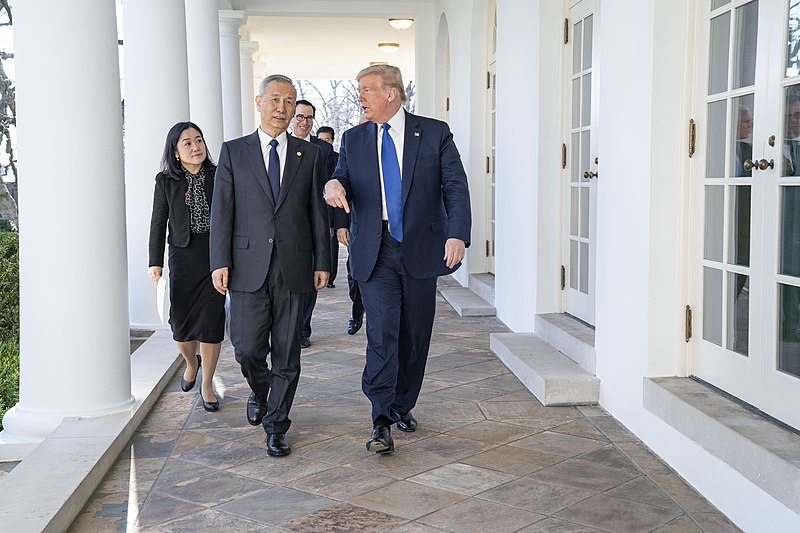By CD Media Staff | January 16, 2020

On January 15, President Donald Trump and China’s Vice Premier Liu He held a long-anticipated ceremony in the East Room of the White House to sign a “Phase One” U.S.-China trade deal. The document, entitled “Economic and Trade Agreement Between the United States of America and the People’s Republic of China,” runs to 96 pages with eight chapters, covering intellectual property, technology transfer, trade in food and agriculture products, financial services, macroeconomic policies and currency, expanding trade, and dispute resolution. As part of the deal, China has agreed to increase its purchases of U.S. goods and services by at least $200 billion over the next two years compared to 2017 imports. For its part, the United States will trim some tariffs but maintain them on $360 billion worth of Chinese imports, the bulk of the bilateral trade.
The deal is written like a traditional trade agreement, with a range of substantive and process commitments by both sides that will only be as strong as the degree to which they are implemented by both sides. For now, it puts a pause on trade tensions between the world’s two largest economies that had been escalating for much of the past two years. However, it leaves many structural issues—notably Chinese subsidies and other industrial policies—unaddressed. Whether, when, and how “Phase Two” negotiations between the two sides move ahead remains unclear…
To read more visit CSIS.
This piece originally appeared on CreativeDestructionMedia.com and is used by permission.
The opinions expressed by contributors and/or content partners are their own and do not necessarily reflect the views of Steve Gruber.
Join the Discussion
COMMENTS POLICY: We have no tolerance for messages of violence, racism, vulgarity, obscenity or other such discourteous behavior. Thank you for contributing to a respectful and useful online dialogue.